 |
||||||||||||||||||||||||
 |
 |
|||||||||||||||||||||||
 |
||||||||||||||||||||||||
 |
 |
 |
 |
|||||||||||||||||||||
| 2015 CIRCLES | 2014 CIRCLES | 2013 CIRCLES | 2012 CIRCLES | |||||||||||||||||||||
|
||||||||||||||||||||||||
 |
 |
|||||||||||||||||||||||

|
Ground Report – Hinton Parva, Oxfordshire, 15/07/08Some crop circles seem to be personal to specific individuals and/or relevant in some way to small and large groups of people. Where one person can feel that there is something about a formation that resonates with them, there can and often are another dozen who feel the same way, but for very different reasons. This confirms for me the conscious relationship with this phenomenon and those who are interested in it, and also those links beyond the physical world, communication on a very different level from that of the ‘day to day’.I feel like this one is for me and I hope (along with illustrating the details and features of this unusual formation) to explain why! 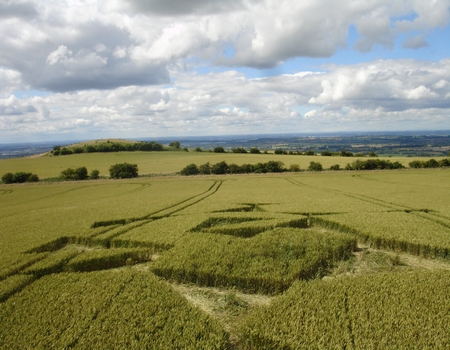 LocationThis formation is literally a stones throw from one of my favourite all time crop circles (of those I have been lucky enough to visit) occurring in 2006. With so many features and not a huge amount of visitors it was something really fantastic and always brings back very fond memories. This is also only a few fields away from one of the most interesting formations of 2007 on Hinton Downs which also demonstrated some amazing features at ground level. So on seeing the words Hinton Parva my imagination was immediately in overdrive!As it turns out, the views of the surrounding landscape are probably better here than in the previous two nearby. 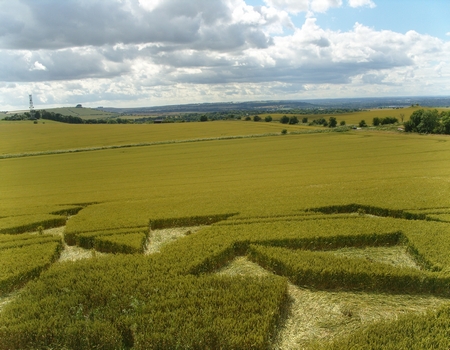 Quality of Laid CropThroughout this formation there are many variations in the direction, layering and flow of the crop. In some places the stems also appear damaged and creased (possibly by visitors) whereas in others the laid crop is in pristine condition (see images below). 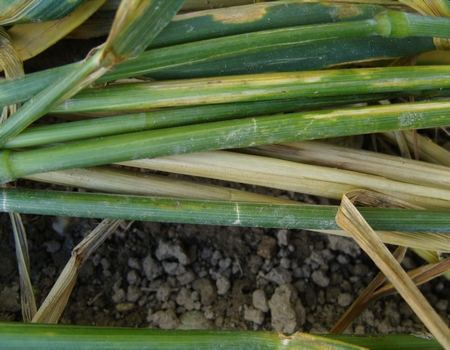 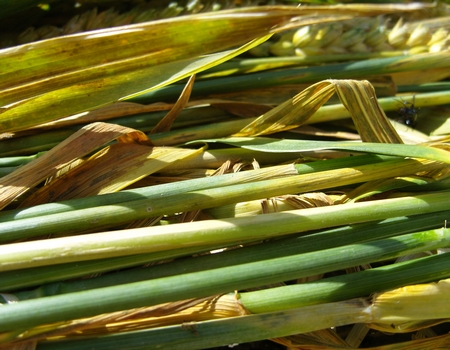 The photos below show some of the overlapping of swathes of crop as they meet and change direction as well as the fluidity with which many of the triangles have been formed. 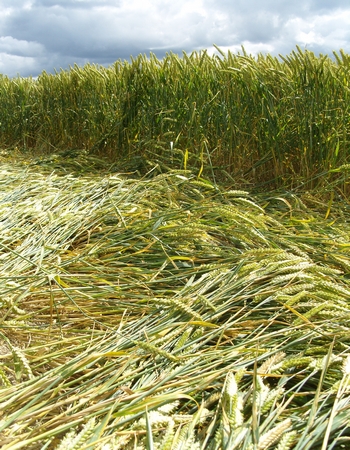 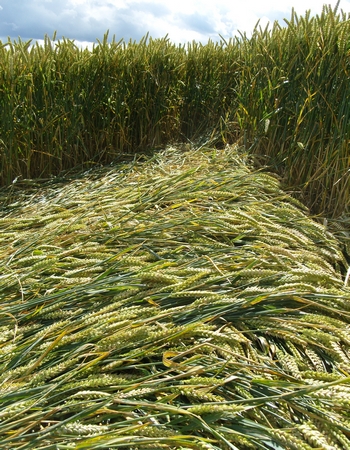 Standing TuftsThese occur everywhere in the formation and each one is different from the last! The images below demonstrate a standing tuft with only a few stems left untouched and laid crop effortlessly flowing around the base and also a smaller but more compact group of standing stems. 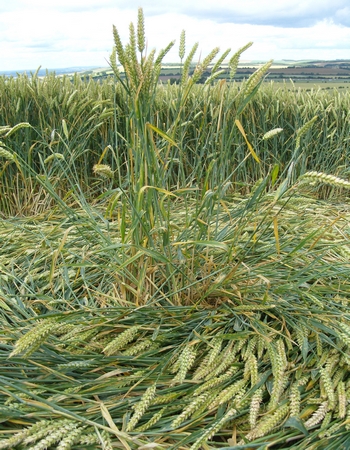 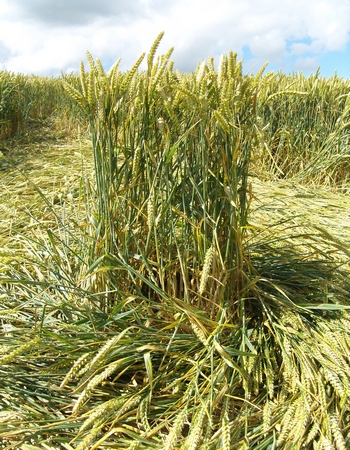 The ultimate version of this occurs in one of the lower lying triangles where no less than three standing tufts of wheat punctuate each corner. Here there is a very definite fluidity to the rest of the laid crop. 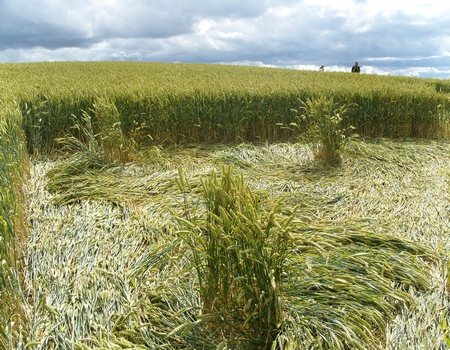 NestsIn the other two formations I mentioned previously, one of the overriding factors in my excitement was in the range of constructions making up the floor lay. This is no exception, with nests, bridges with crop flowing underneath and knots with seedheads splayed outwards among the best (see below). 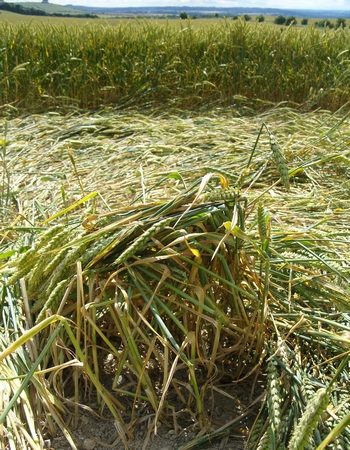 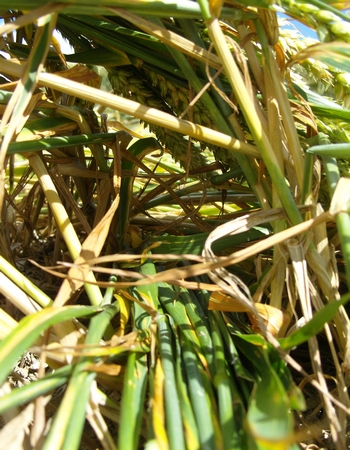 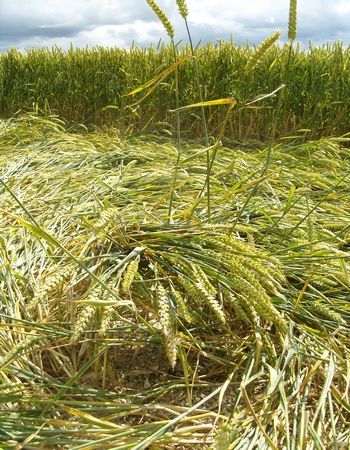 Meeting PlaceOn the day of my visit this formation was very popular! Inside I happened to meet Axel, who first reported the crop circle at Hinton Parva in 2006, a small but important coincidence considering my personal feelings about this one. I also bumped into Denni Clarke who I met at the first crop circle at Marden in 2005, another one which falls into the same category as the previous two I have mentioned as it contained awesome ground detail and variation. I am aware that these ‘coincidences’ are only significant in my own head, but this does illustrate my point that something can be seemingly linked to one person, but only for them!To conclude and emphasise my story further, the following significant (as I would call them) things occurred in relation to this great formation. Firstly, I found a rabbit hole under the laid crop. I have experienced this before, most notably in the crop circle at Hinton Parva in 2006! On the way to the location I had been listening to a CD given to me 5 years ago which I have (until now) not been interested in hearing. For no reason that morning I put it in the car but didn’t play it until later in my journey, then at the point of seeing the sign for Hinton Parva, the lyrics to the song playing said the words ‘fox hill’ which is of course the hill where this formation is! The number 3 is significant for me in many ways, to the extent that I use it in everyday life. The fact that this formation (about the least ‘circluar’ crop circle you can get) is made up entirely of triangles seems very relevant to me. Then on counting them I had been expecting to find a total of a multiple of three – but there are 32. My initial disappointment has now given way to yet more excitement as there is a triangular grapeshot next to another formation in Oxfordshire which appeared the day before this one. How often do you see a triangular grapeshot?! The total is now 33. 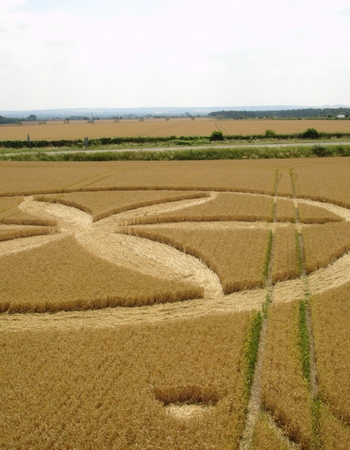 To top this off, I have only ever met one other person (outside my family) with the surname Vidler. This very person has published an amazing book entitled ‘The Star Mirror’ in which he details the geometric arrangement (in isosceles TRIANGLES) of the highest points across the globe as well as of brightest stars. Mark Vidler has added some diagrams from his book to another crop circle website which look a lot like the pattern formed at Hinton Parva. For me this confirms the link further (as well as the link to another person) and finishes off, for now, a mysterious personal journey! I love everything about this! 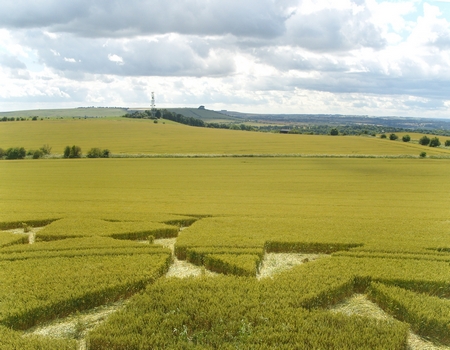 Crop Circle Summary
Alternative Websites |

